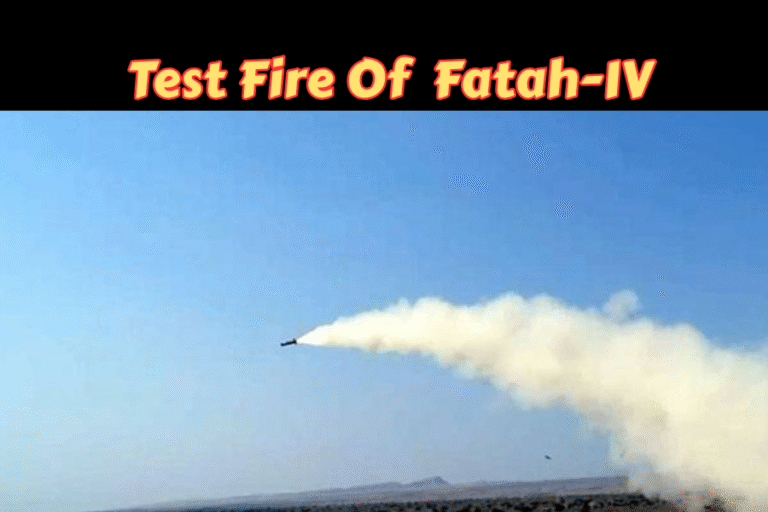(By Ayesha Mahnoor)
When Afghan Foreign Minister Amir Khan Muttaqi recently asked, “If Afghanistan is really a center of terrorism, why don’t Iran, Uzbekistan, Turkmenistan, Tajikistan, and China complain? Why only Pakistan?” he sought to invert the narrative and frame Pakistan as a uniquely hostile critic. But in doing so, he obscures a far more complex reality: the concerns Pakistan voices are neither isolated nor unfounded, but shared—if variably expressed—by multiple states, international organizations, and civil society actors.
This article unpacks Muttaqi’s rhetorical gambit, surveys the broader evidence of threats emanating from Afghanistan under Taliban rule, and reflects on how Pakistan’s claims fit within the larger international consensus. It argues that while diplomatic styles differ across states, the fundamental unease about Taliban governance—its human rights posture, harboring of militant groups, and capacity for regional destabilization—is pervasive. Pakistan’s role is not a lone voice, but rather a frequent and loud one, owing to geography, history, and burden.
The Myth of “Only Pakistan Complains”
Muttaqi’s assertion has rhetorical force: by painting Pakistan as the only critic, he suggests bias or undue targeting. But that framing collapses under scrutiny.
Diplomatic Isolation of the Taliban
The Taliban regime in Kabul remains largely unrecognized globally. The United Nations continues to treat the Taliban as “de facto authorities,” while the world formally recognizes the previous Afghan government in protocol terms. Pakistan’s statements about terrorist sanctuaries emerge against this backdrop of diplomatic caution.
Russia’s 2025 decision to recognize the Taliban government was notable—one of the very few such steps globally—but it did not trigger a wave of similar recognitions. Most nations, even those with extensive border or economic ties, have stopped short of outright formal recognition. China, Iran, Turkey, the Gulf states, and major Western countries engage pragmatically but maintain reservations.
If only Pakistan “complained,” one might expect silence elsewhere. Yet many states publicly condemn Taliban practices on human rights, call for action on counterterrorism, and push for conditional engagement. The difference lies in tone—some states express concerns quietly, others publicly—but the unease is shared.
Shared Regional Concerns
While neighboring states seldom echo Pakistan’s blunt tone, they all express underlying alarm about spillover risks, militant movements, and border insecurity.
- Iran has repeatedly suffered ISIS-Khorasan (ISIS-K) attacks on its soil that trace back to Afghanistan. Tehran views ISIS-K as a major threat, sometimes more immediate than the Taliban itself.
- Tajikistan, Turkmenistan, and Uzbekistan remain wary of infiltration by extremist groups, radicalization along their borders, and narcotics trafficking. These states often undertake joint counterterrorism training and UN-backed cooperation programs.
- China, despite its investments under the Belt and Road Initiative, remains deeply concerned about Uyghur militants and the East Turkestan Islamic Movement (ETIM) using Afghan territory as a base.
Thus, the absence of Pakistan’s rhetorical bluntness among neighbors does not equate to the absence of concern.
Human Rights Abuses and Gender Apartheid: The Core Barrier
One of the main reasons for the world’s hesitation to accept Taliban rule has been its systemic violations of human rights, especially against women and girls. This issue is not peripheral—it lies at the heart of the global stance toward Kabul.
Educational Exclusion and Social Repression
Since banning secondary education for girls and restricting women’s participation in public life, more than two million Afghan girls remain deprived of schooling beyond grade six. The effects are devastating: maternal mortality is rising, female healthcare workers are dwindling, and entire generations of women are being erased from public existence.
Policies such as the “Law on the Promotion of Virtue and Prevention of Vice” enforce moral policing, limit mobility, and silence women in media and civil society. These are not temporary measures—they reflect the Taliban’s ideological rigidity. The United Nations and human rights bodies have repeatedly warned against “normalizing” Taliban rule without meaningful change.
Cultural and Civil Resistance
Taliban efforts to suppress women’s voices and cultural expression—such as banning women from journalism, arts, and public gatherings—symbolize an attempt to erase Afghanistan’s diverse identity. The regime’s earlier destruction of heritage sites remains a reminder of intolerance. These actions have alienated even potential allies and drawn near-universal condemnation.
In global diplomacy, the human rights issue is not a bargaining chip; it is a defining obstacle to recognition and engagement.
Taliban and Terrorism: Safety, Sanctuaries, and Spillover
Muttaqi’s question ignores overwhelming evidence of continuing terrorist operations in and from Afghanistan.
Persistent Militant Presence
The Tehrik-i-Taliban Pakistan (TTP), a UN-designated terrorist organization, has expanded its footprint inside Afghanistan, exploiting porous borders to launch attacks into Pakistan. Reports confirm that Taliban authorities have failed to neutralize groups like ISIS-K and other jihadist entities. ISIS-K continues to conduct mass-casualty attacks inside Afghanistan and neighboring countries, targeting civilians, ethnic minorities, and religious congregations.
In 2025 alone, Pakistan endured a sharp rise in TTP-linked violence—hundreds of attacks killing civilians and soldiers. In response, Pakistan carried out cross-border strikes on TTP hideouts inside Afghanistan, igniting border clashes in October 2025. These confrontations underscored that instability in Afghanistan continues to spill into Pakistan.
Spillover and Regional Threats
The Global Terrorism Index consistently ranks Afghanistan among the world’s most terrorism-affected countries. Despite Taliban claims of stability, militant networks thrive.
Terrorism in Afghanistan is not a confined national problem—it is a regional menace. Extremist movements inspired or supported by Afghan-based groups pose threats to Central Asia, Iran, and beyond. This has prompted renewed coordination among regional powers, including China and Russia, to prevent the spread of instability.
Why Pakistan Speaks Louder Than Others
Pakistan’s vocal position is rooted not in hostility but in the sheer weight of its exposure to Afghan instability.
Geography and Proximity
Pakistan shares a 2,670-kilometer border with Afghanistan, much of it rugged and porous. The frontier facilitates both trade and terrorist infiltration. Areas such as Khyber Pakhtunkhwa and Balochistan are especially vulnerable to attacks by militants operating from Afghan sanctuaries.
Human Cost and Economic Toll
Since 2001, Pakistan has lost over 70,000 lives to terrorism-related violence and suffered economic losses exceeding 150 billion dollars. The 2014 Peshawar school massacre, where 132 children were murdered, remains a painful reminder of the TTP’s brutality and Afghan-based support networks.
Pakistan has also hosted millions of Afghan refugees for decades, bearing one of the world’s heaviest humanitarian burdens. For Islamabad, therefore, the Afghan issue is not a foreign policy debate—it is a matter of national survival.
Diplomatic Leverage and Perception
Pakistan’s assertive diplomacy also serves to shape the narrative. By confronting the Taliban’s claims, Islamabad seeks to highlight facts and maintain international attention on the threats emanating from Afghan soil. Silence would only allow Afghanistan’s regime to rewrite the story unchecked.
Building a Credible Rebuttal to Muttaqi’s Narrative
Muttaqi’s rhetorical challenge can be countered with a calm, fact-based, and principled argument built on five pillars:
- Reaffirm the International Consensus – Pakistan should emphasize that its complaints align with global norms and United Nations findings, not isolated grievances. The call for a rights-respecting, peaceful Afghanistan is shared across continents.
- Use Verifiable Evidence – Islamabad must cite documented attacks and UN reports to substantiate claims of cross-border terrorism. Offering transparency—such as inviting neutral investigations—would strengthen its credibility.
- Focus on Humanitarian Principles – Pakistan’s argument should also highlight the Taliban’s assault on women’s rights, minorities, and civil freedoms, presenting them as universal violations, not just Afghan issues.
- Offer Conditional Engagement – Rather than complete isolation, Pakistan and the world should pursue conditional engagement: cooperation in return for verifiable reforms like ending terror sanctuaries and restoring women’s education.
- Pursue Regional Coordination – Pakistan should rally support through multilateral platforms such as the Shanghai Cooperation Organization, OIC, and SAARC. By aligning its stance with that of Central Asian neighbors, Pakistan can transform a “solo complaint” into a regional demand for stability.
Challenges in Implementation
While this approach is sound, several challenges remain:
- Overemphasis on security may invite accusations of aggression or interference.
- Prolonged rhetoric without results risks diminishing diplomatic credibility.
- The Taliban could attempt to portray Pakistan as scapegoating to distract from internal problems.
- International fatigue over Afghanistan may weaken global responsiveness to Pakistan’s warnings.
Thus, Islamabad must maintain a balance—firm but diplomatic, factual yet humane.
Future Scenarios and Policy Directions
- Conditional Recognition – If the Taliban moderates its policies, particularly on human rights and counterterrorism, selective recognition could follow. Until then, conditionality must be maintained.
- Multilateral Monitoring – Pakistan can propose a UN-backed or regional mechanism to oversee counterterrorism efforts along the Afghan border, reducing the potential for bilateral tension.
- Transnational Cooperation – Joint intelligence sharing, border management, and counter-radicalization programs with Central Asian states could institutionalize security.
- Soft Power and Narrative Building – Pakistan should invest in supporting Afghan civil society, women’s education, and cultural initiatives. The goal should be to stand with the Afghan people, not just against their rulers.
Conclusion
Amir Khan Muttaqi’s question—“Why only Pakistan?”—is a rhetorical shield designed to deflect responsibility. The truth is that Afghanistan under Taliban rule has generated regional and global anxiety due to its human rights violations, harboring of militants, and inability to govern inclusively.
While others may phrase their concerns differently, the underlying apprehension is universal. Pakistan’s outspokenness stems from geography, history, and sacrifice. Yet for its voice to command broader respect, it must root its case in shared international principles, credible evidence, and constructive diplomacy.
The challenge before Pakistan—and the world—is not merely to counter Taliban rhetoric, but to push for a future Afghanistan that rejects extremism, embraces equality, and returns to the community of responsible nations.







